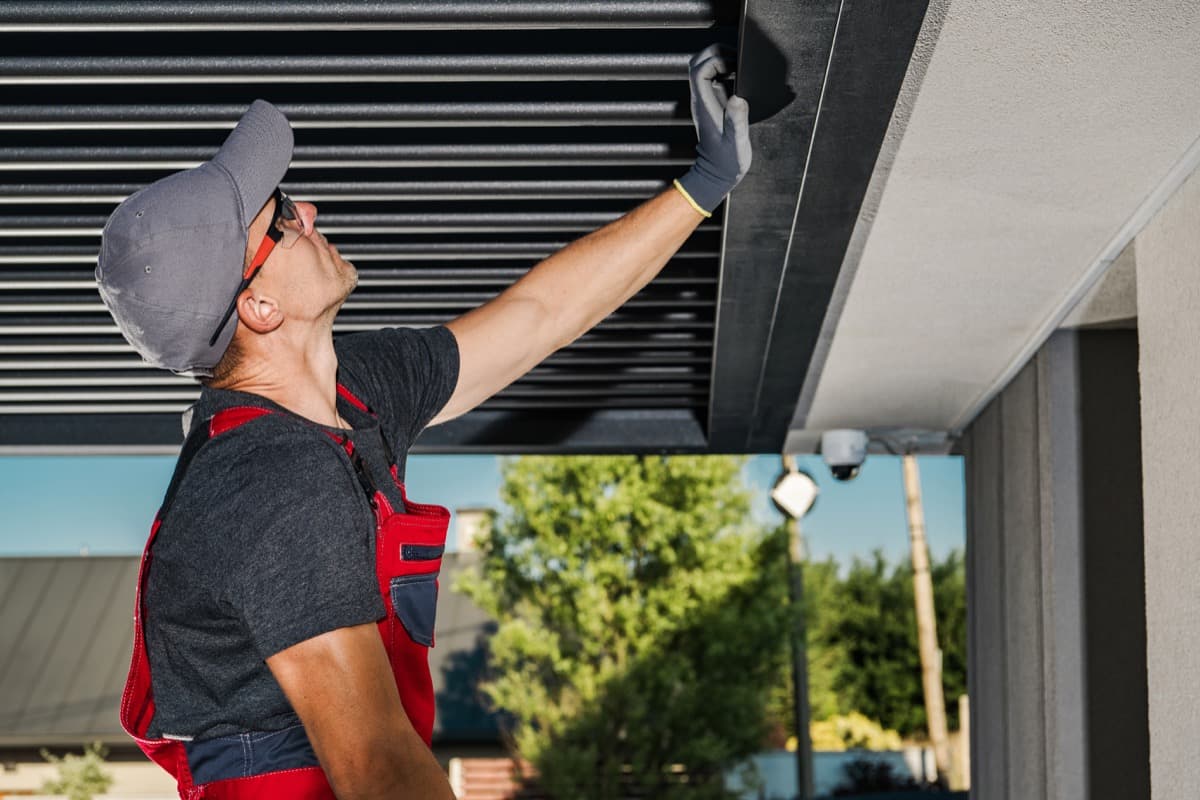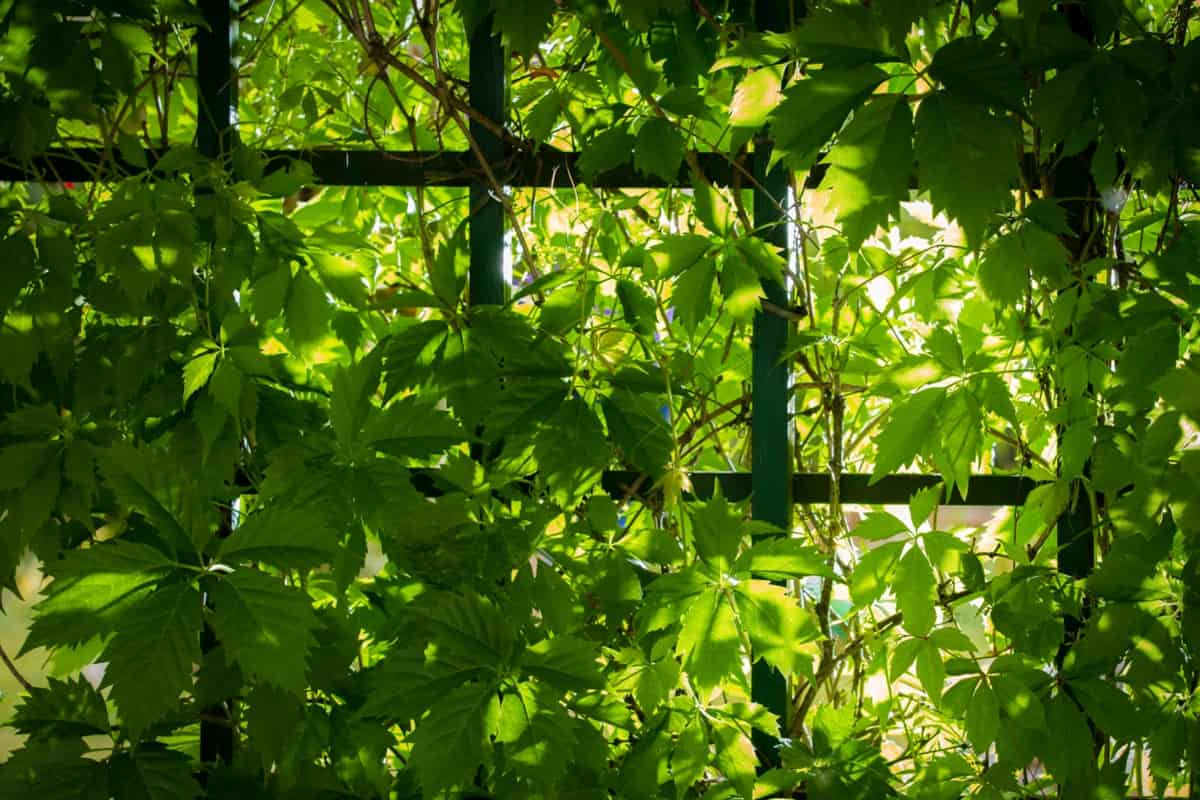Building a pergola on your terrace is a great way to create a beautiful outdoor space for growing vine plants. A pergola is a structure made up of vertical posts or pillars that support a roof-like framework of beams and rafters. This structure provides a supportive and attractive environment for your vines to grow and flourish. Below is a step-by-step guide to building a pergola on your terrace, and we also learn about building DIY climbing plant support and the benefits of having a pergola.

How to build a pergola on terrace
What are the benefits of having a pergola on the terrace?
Having a pergola on your terrace for growing vine plants can provide numerous benefits. Firstly, a pergola provides shade and shelter. A pergola with climbing vines can create a cool, shaded area ideal for outdoor dining, entertaining, or simply lounging. This can help you make the most of your outdoor space, especially during the hot summer.
In addition to providing shade, a pergola can enhance your outdoor space’s aesthetic appeal. A well-designed pergola with lush climbing vines can add visual interest and beauty to your terrace. It can also enhance your home’s value and offer a pleasant outside space for guests. Growing vine plants on a pergola can also provide a source of fresh fruit, such as grapes, and attract wildlife, such as birds, to your outdoor space.
Step-by-step guide on building a pergola for growing vines
Plan your pergola: Before you start building, it’s essential to plan out the size and design of your pergola. Consider the size of your terrace, the location of any doors or windows, and the type of vines you plan to grow. You’ll also want to decide on the size and shape of your beams, rafters, and posts.
Gather materials and tools: To build a pergola, you’ll need a variety of materials, including treated lumber for the posts, beams, and rafters and galvanized hardware, such as screws and bolts, to assemble the structure. You’ll also need tools, such as a saw, drill, level, and ladder, to help with construction.
Prepare the site: Before you start building, it’s essential to prepare the site. Clear away any debris and level the ground if necessary. Make sure the area is free from any electrical or plumbing lines.
In case you missed it: How to Start Container Terrace Garden: DIY, in Simple Steps from Scratch

Install the posts: The first step in building a pergola is to install the posts. Start by digging holes for each post, ensuring they are level and spaced evenly. Set the posts in the holes, using a level to ensure they are plumb. Fill the holes with concrete and let it set.
Install the beams: Once the posts are set, it’s time to install the beams. Cut the beams to the correct length and attach them to the posts using galvanized hardware. Make sure the beams are level and secure.
Install the rafters: The next step is to install the rafters. Cut the rafters to the correct length and attach them to the beams using galvanized hardware. Make sure the rafters are level and spaced evenly apart.
Add the roof: To complete your pergola, you’ll need to add a roof. There are several options for roofing materials, including lattice, shade cloth, or clear polycarbonate panels. Choose the option best suits your needs and attach it to the rafters.
Plant your vines: Once your pergola is built, it’s time to plant your vines. Choose a type of vine that suits the conditions on your terrace and train it to climb the structure. As your vines grow, they will cover the roof and create a lush, green canopy.
Frequently asked questions
How to build a wire trellis for climbing plants? / DIY trellis for climbing plants
A wire trellis is a simple and effective support system for climbing plants, such as roses, grapes, or clematis. To build a wire trellis, you’ll need some basic materials, such as wire mesh, wooden stakes, and galvanized wire or cable ties. To build a wire trellis, first determine the size and location of the trellis. Next, dig two wooden stakes on either side of the area where you want the trellis to be located.
Cut a piece of wire mesh to the desired size, and attach it to the wooden stakes using galvanized wire or cable ties. Make sure the wire mesh is securely attached to the stakes and that it is level. Then plant your climbing plant near the base of the trellis and train it to climb the wire mesh as it grows. Over time, the plant will grow and cover the wire trellis, creating a beautiful and functional support system for your plants.
How to train grape vines on a pergola?
To train grape vines on a pergola, start by selecting a healthy, vigorous grapevine and planting it near the base of the pergola. Then, as the vine grows, guide it up one of the posts and along one of the pergola beams. To encourage the vine to grow along the pergola, it’s important to provide support. You can use soft ties, such as garden twine or nylon stockings, to gently secure the vine to the pergola.
In case you missed it: How to Build a Terrace Garden: DIY, in Simple Steps, and Setup Cost

As the vine grows, it will eventually reach the top of the pergola, at which point you can cut off the growing tip to encourage it to produce more shoots. Over time, the vine will produce fruit and cover the pergola, creating a lush and shaded outdoor space. To maintain the health and productivity of your grapevine, it’s important to provide proper pruning, training, and irrigation. With a little care and attention, your grapevine will thrive on your pergola and provide you with fresh, delicious grapes for many years to come.
What is the cheapest way to build a pergola?
Utilize already-existing garden structures to save on timber costs. To further reduce costs, you can use an already-existing fence or wall in your pergola design. This can significantly reduce the cost of building a pergola since it requires less wood.
Conclusion
Constructing a pergola for your terrace is a creative and satisfying task. You can make a lovely garden for growing vines if you put in the time and effort.
- Feed Your Flock for Less: Top 10 Tips to Save on Chicken Feed
- Ultimate Guide to Ossabaw Island Hog: Breeding, Raising, Diet, and Care
- Hatching Answers: The Top 10 Reasons Your Chickens Aren’t Laying Eggs
- Eggs and Economics: Breaking Down the Cost of Raising Backyard Chickens
- Defend Your Greens: Proven Methods to Keep Iguanas Out of Your Garden
- Ultimate Guide to Cinnamon Queen Chicken: A Comprehensive Guide for Beginners
- Ultimate Guide to California Tan Chicken: Breeding, Raising, Diet, Egg-Production and Care
- Ultimate Guide to Marsh Daisy Chicken: Breeding, Raising, Diet, and Care
- 10 Types of Chicken Farming Businesses You Can Start for Profits